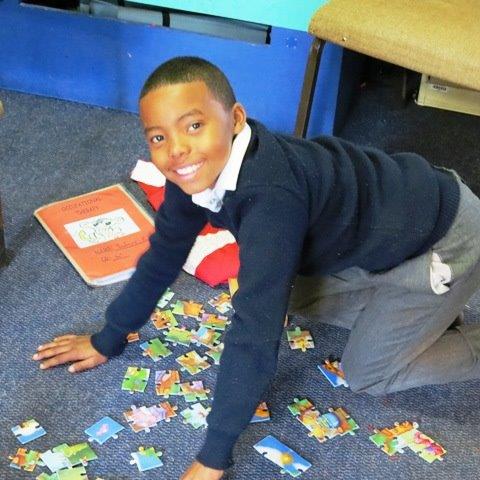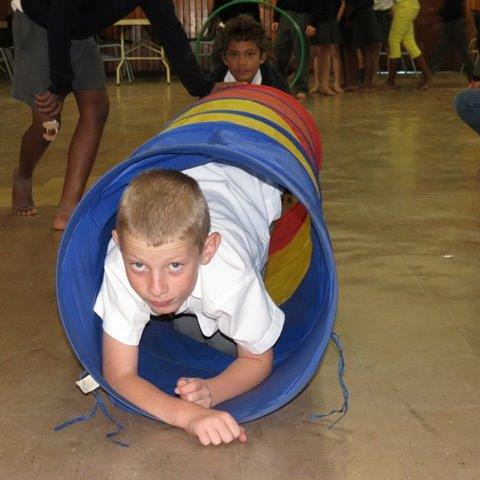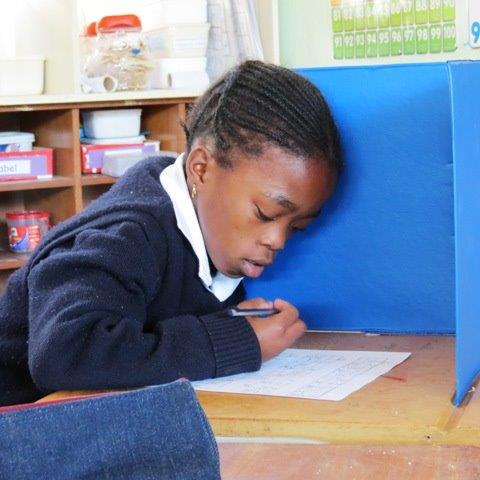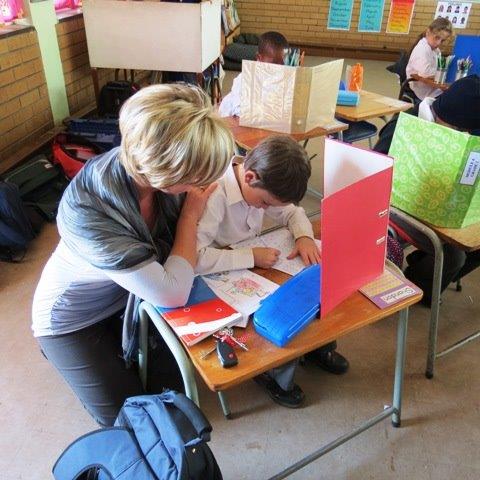Occupational Therapy / Arbeidsterapie
"Occupational therapy is as a profession concerned with promoting health and well being through engagement in occupation"
— World Federation of Occupational Therapists
Occupational therapists help people across the lifespan participate in the things they want and need to do through the therapeutic use of everyday activities (occupations). Common occupational therapy interventions include helping children with disabilities to participate fully in school and social situations, helping people recovering from injury to regain skills, and providing supports for older adults experiencing physical and cognitive changes.
What is school-based occupational therapy?
School-based occupational therapy is designed to enhance the student's ability to fully access and be successful in the learning environment. This might include working on handwriting or fine motor skills so the child can complete written assignments, helping the child organise himself or herself in the environment (including work space in and around the desk), working with the teacher to modify the classroom and/or adapt learning materials to facilitate successful participation.
What can OT's do?
- Assess the child's level of performance in critical developmental areas
- Observe the child's home and school environment and determine how it may be modified to promote better development
- Develop a plan of treatment in coordination with other professionals who are treating the child
- Recommendadaptive equipment to facilitate the development of age-appropriate abilities
What can parents/caregivers do?
- Stay educated about and involved in the child's treatment plan
- Follow up with the treating occupational therapist and other professionals to encourage further development and track progress
Reduced fees for eye/ear tests from Lions Club
The Lions Clubs provide the following services to people not on medical aid, at a nominal fee:
- Eye test — R60
- Spectacles — R140
- Hearing test (incl. hearing aid) — R300
The Lions Community Centre
82 - 8th Avenue, Roodepoort
Tel: 011 763 6571
The Lions Community Centre is open on Saturdays only from 08h30 to 11h00.
If you have any questions or cannot afford the prices indicated above, please contact Mrs Hunter at Lantern School, Tel: 011 760 1096/7
Which areas of development are addressed by an occupational therapist at Lantern School?
Motor Development
Gross-Motor
Gross-motor refers to movements that involve large muscle groups and are generally more broad and energetic than fine motor movements. These skills may include walking, kicking, jumping, and climbing stairs. Occupational Therapists may typically work on components such as muscle tone, coordination and balance.
Fine-Motor
Fine-motor refers to movements that require a high degree of control and precision. These may include drawing shapes, handwriting, cutting with a scissors, using eating utensils. Handwriting is a complex process of managing written language by coordinating the eyes, arms, hands, pencil grip, letter formation, and body posture. The development of a child's handwriting can provide clues to developmental problems that could hinder a child's learning because teachers depend on written work to measure how well a child is learning. Occupational therapists can evaluate the underlying components that support a student's fine-motor skills, such as muscle strength, endurance, coordination, and motor control, and parents can encourage activities at home to support good handwriting skills.
Visual Perception
Visual perception is the ability to make meaning of or interpret what we see. This process happens in the brain and not in the eyes. However, problems with the eyes may disturb visual perception. It is associated with other skills such as attention and memory. Research has shown that young children's' perceptual skills can be developed by intensive training programmes. These process orientated approaches are designed to "train the brain" for example - to improve its ability to focus on relevant visual aspects and understand spatial relationships. With older children the emphasis should be on teaching a skill directly rather than training the brain in a more general way so that it can learn the skill more easily. Also the emphasis should be on supporting the learner to develop strategies to cope with his/her specific areas of weakness.
Areas of Visual Perception include:
Position in Space: The ability to perceive the position of an object in space.
Visual-spatial Relationships: The ability to perceive the position of two or more objects in relation to both oneself and each other.
Form Constancy: The ability to differentiate between shapes and symbols, irrespective of size, colour and orientation. The ability to observe the properties of an object.
Figure-Ground Perception: The ability to focus attention on one specific stimulus while all other stimuli recede into the background.
Visual Discrimination: The ability to differentiate between objects and to perceive similarities and differences.
Visual Closure: This relates to analysis and synthesis and is the ability to identify a common object from a visual presentation which is incomplete or unorganized.
Visual Memory: The ability to retain and recall that which has been seen.
Visual Sequential Memory: The ability to remember and reproduce a sequence of visual symbols in the order of presentation.
Sensory Integration
Ayers (1972) defined sensory integration as "the neurological processes that organises sensation from one's own body and from the environment and makes is possible to use the body effectively within the environment" Sensory Integration is a theory of brain- behaviour relationships. Sensory integration work is based on the idea that people with motor or sensory problems have difficulty processing the information their body receives through the various senses.
The ability to attend to a task depends on the ability to screen out, or inhibit, nonessential sensory information, background noises, or visual information. The child with sensory integrative dysfunction may frequently respond to or register sensory information without this screening ability and is considered distractible, hyperactive, or uninhibited. These children are always "on the alert" and constantly asking about or orienting to sensory input that others ignore (refrigerator motor, heater fan, distant airplane, etc.). Other children may fail to register unique sensory input and are unresponsive to stimuli. For example, the child may not turn around or respond when her name is called.
Children with regulatory disorders often have difficulty establishing appropriate sleeping and eating patterns, are unable to calm or console themselves, and may overreact to environmental stimuli. Georgia DeGangi states that "disorders of regulation appear to be based on problems associated with sensory processing, communicative intent, state control and arousal, and modulation of emotions" (DeGangi, 1995).
Cognitive Development
Cognitive development is the construction of thought processes, including remembering, problem solving and decision making. Without developed cognitive skills, children fall behind because they aren't able to integrate new information.
The Occupational Therapist at Lantern School may include the following in the OT program in order to enhance cognitive development:
- Learning how to learn, this includes study methods
- Mediating good decision making
- Assisting step-by-step problem solving
- Teaching the learner how to organise his/her work
- Facilitating good use of time
- Memory training
- Improving attention
- Helping the learner to "generalise" skills obtained in the OT sessions in order to apply them in other situations
Contact information
Phone
011 760 1096/7Fax
011 763 2282Physical Address
CR South Road & Albertina Sisulu Road, LindhavenH/V Suidweg & Albertina Sisuluweg, Lindhaven




